Our second installation of the 12 Months of Aquatic Critters blog series features the diverse group of freshwater fishes known as darters!
Darters are a group of small, slender freshwater fish in the family Percidae (Perch family) that are native to eastern North America. Most live near the bottom of clear streams and “dart” quickly when disturbed or when feeding. Darters eat small aquatic insects (i.e. the critters highlighted in Caddisflies and EPT Friends), worms, and small crustaceans. Some darters are exceptionally showy with bright colors and patterns that rival most tropical fish available at your local pet shop! During the breeding season, male colors become even brighter, sometimes, even expanding to additional parts of the body. For most darters in Alabama, spawning season occurs from early spring to early summer.
There are a total of 80 species of Darters found in Alabama. Of those, several species are federally endangered (Boulder Darter, Rush Darter, Vermillion Darter, and Watercress Darter) or federally threatened (Goldline Darter, Slackwater Darter, and Trispot Darter) under the Endangered Species Act. Furthermore, there are 27 darters on the 2015 Alabama State Wildlife Action Plan‘s Species of Greatest Conservation Need (SGCN) List and one species, the Lipstick Darter, is on the Watch List for the SGCN.
We’ll introduce you to some of the rarer species below.

Watercress Darter
The Watercress Darter (Etheostoma nuchale) is an Alabama endemic species that is only found in a handful of spring-fed streams in the Birmingham area. This species is federally endangered by the U.S. Fish and Wildlife Service due to threatened habitat from runoff of surrounding commercial and residential development. The story of the Watercress Darter is one involving successful and long-lasting partnerships. Discovered in 1964 by a Samford University biologist, the watercress darter was quickly listed in 1970 as endangered. The Watercress Darter National Wildlife Refuge was established in 1980 near the city of Bessemer to protect critical habitat. The late Marty Schulman, a longtime Alabama Water Watch volunteer monitor, worked alongside USFWS to monitor 3 of the 5 known Watercress Darter habitats for years. In 2018, the Freshwater Land Trust completed a habitat enhancement project at Roebuck Springs, in collaboration with USFWS and the city of Birmingham.

Many a visitor to Birmingham have seen an artistic rendition of the Watercress Darter by Roger Peet on the side of Lake Cottage Books in Birmingham’s East lake neighborhood. This beautiful mural is part of the Center for Biological Diversity’s Endangered Species Mural Project.
Slackwater Darter

The Slackwater Darter is found in north Alabama and utilizes two distinct habitat types depending on the time of year. Typically this species is found in pools of small streams with organic debris, but during the recharge season of late winter and early spring when water levels rise, Slackwaters migrate into adjacent flooded lowlands with spring seepage to spawn. This species was described in 1974 and is federally threatened.
Redline Darter
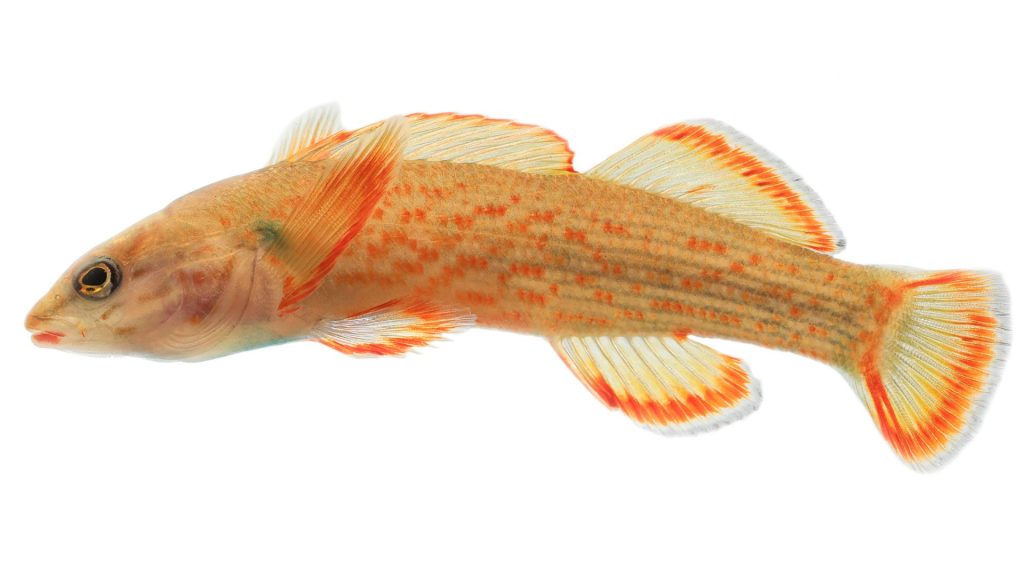
The Redline Darter is found in the Tennessee River Basin and beyond Alabama boundaries in the Cumberland River Basin of Tennessee and Kentucky. Spawning in Alabama occurs in May and June. This species is found in swift riffles and shoals near large rocks in small to large streams as well as shallower areas over gravel and cobble shoals with exposed bedrock.
Brown Darter
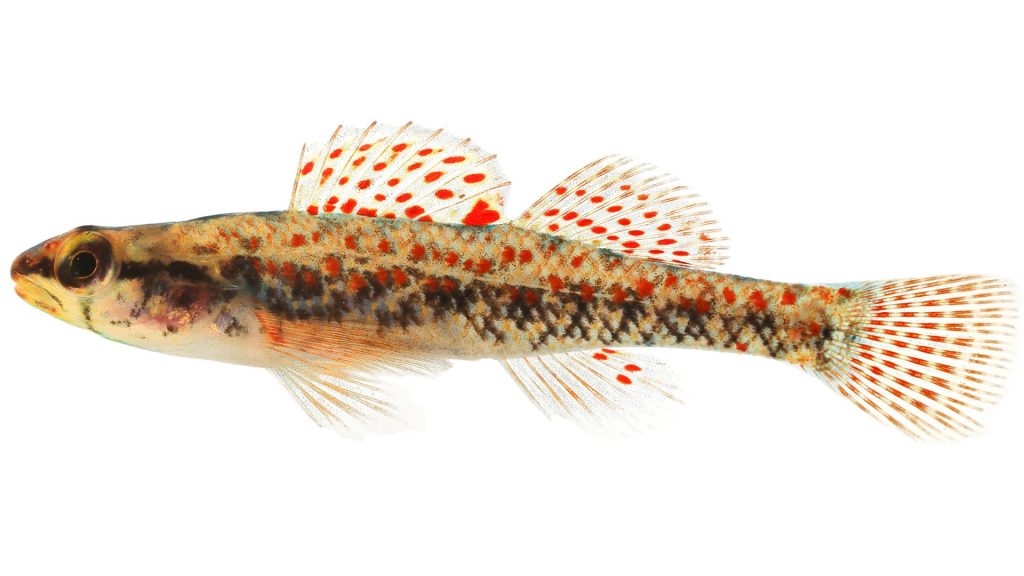
The Brown Darter is a smaller species (rarely over 1.5 inches) found in Gulf Coastal drainages. Browns have mottled brown bodies with bright red spots on their sides and on dorsal, caudal and anal fins. This species prefers to live in aquatic vegetation or exposed root masses in small to moderate-sized, shallow streams. Female Browns deposit a single egg per spawning on vegetation that is externally fertilized by a male.
Trispot Darter
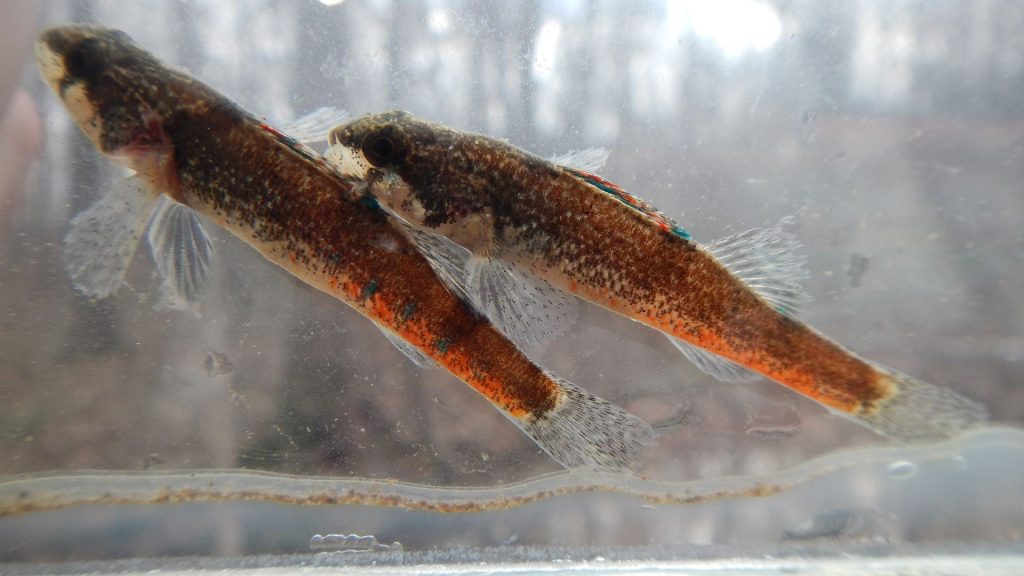
The federally threatened Trispot Darter is a smaller darter (1.3-1.6 inches long) with three prominent black dorsal saddles, a pale underside, and a dark bar below the eye. During the breeding season, males develop a reddish-orange color with green markings on the sides. Trispots spawn during the winter months in small tributaries and seepage areas, a distinctively different habitat type from its non-breeding habitat in small to medium river margins with slower moving water near detritus, logs, with cobbly, pebbly substrate. Trispots This species is threatened by reduced habitat connectivity. All occurrences of Trispots are above the Fall Line in the Ridge and Valley ecoregions of Alabama, Georgia, and Tennessee, occupying only 20% of its historically known range.
Crystal Darter
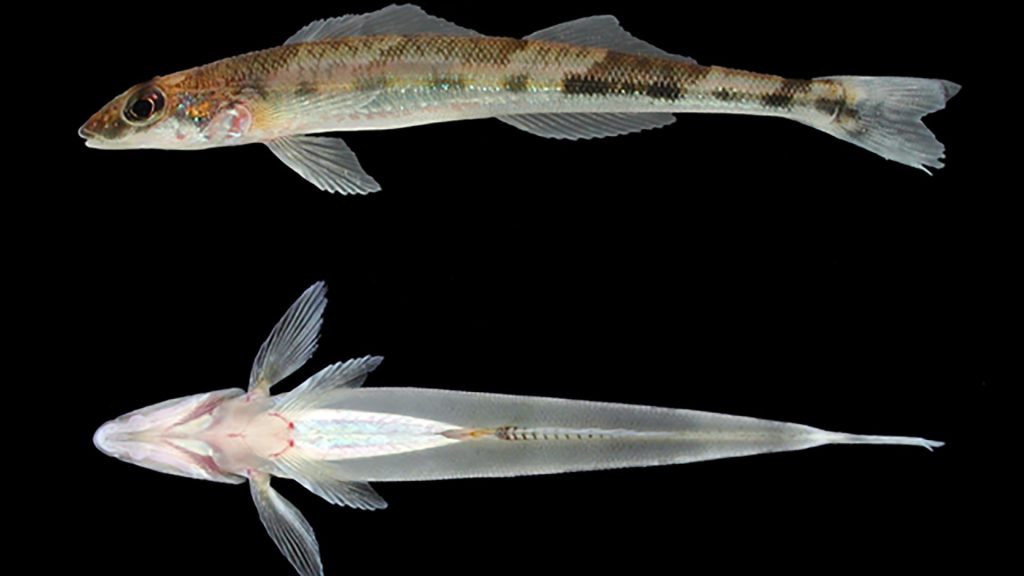
The Crystal Darter has a long, slender body with large pectoral fins and a long head. Aptly named, the Crystal Darter is largely translucent, except for the dark saddles on its back. Individuals are between 2-5 inches long and occur throughout the Mississippi and Ohio rivers basins; although most populations are isolated from each other. This species was heavily impacted by the construction of the Tennessee-Tombigbee waterway. Crystals prefer sand and gravel bars in large rivers and streams in the Coastal Plain region. This species has a curious behavior where it buries its body, except for its eyes, in swift-flowing environments, presumably to conserve energy.
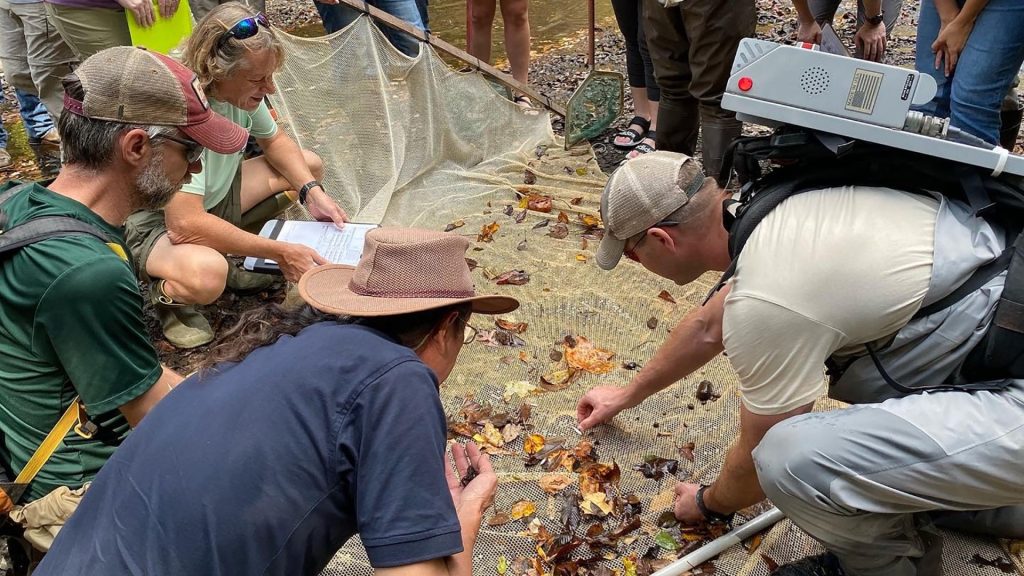
Other Darters of Alabama


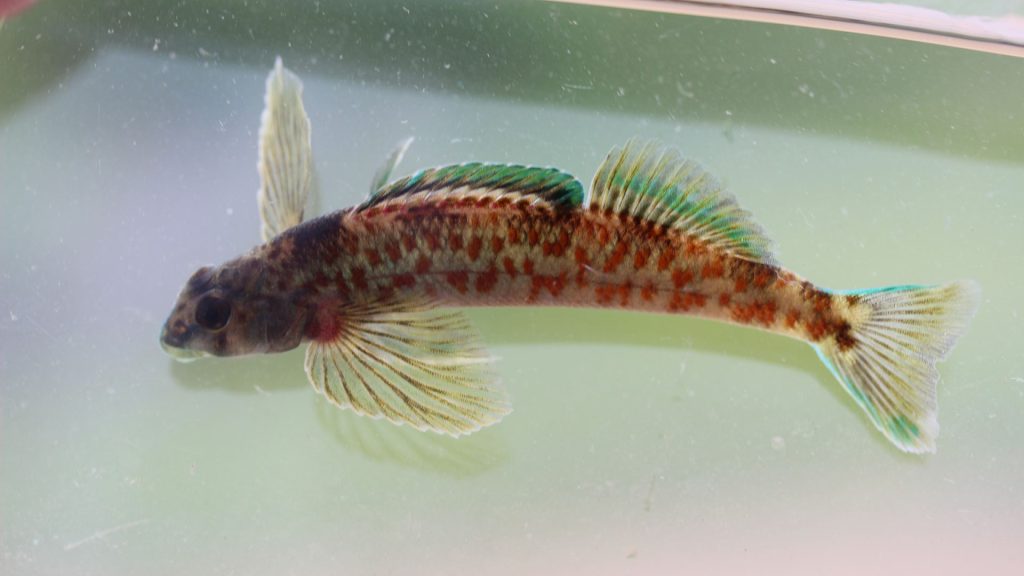
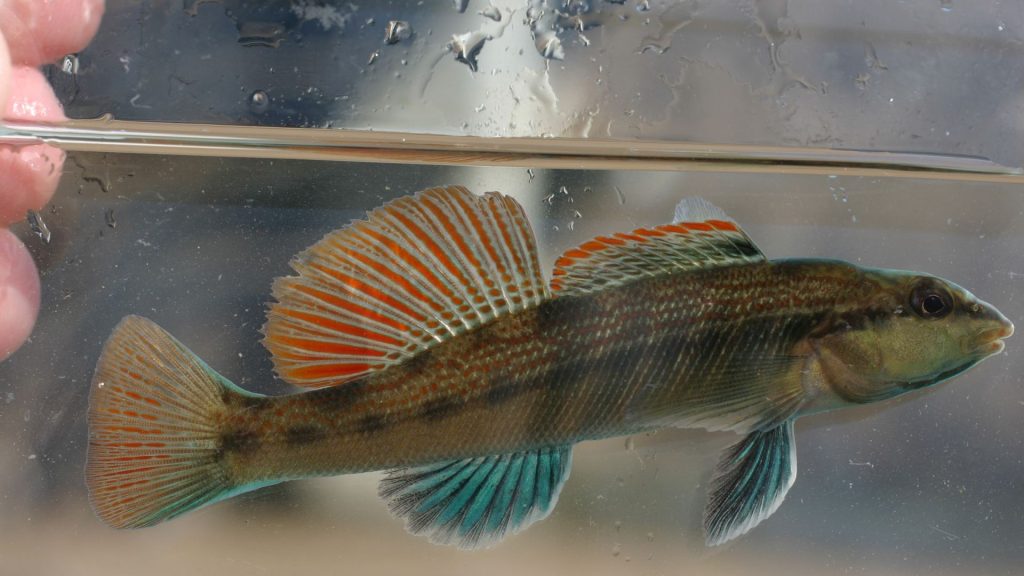
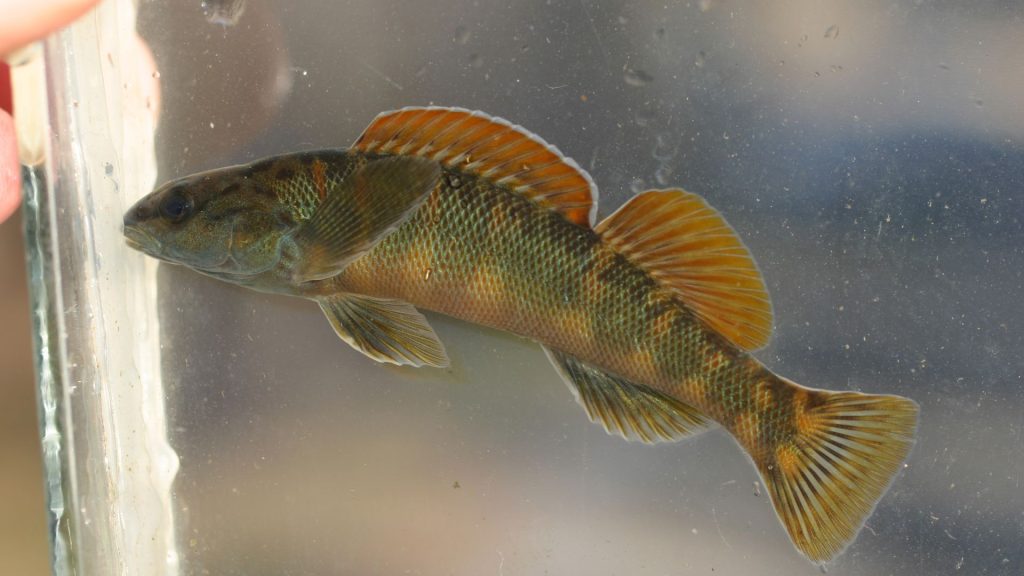

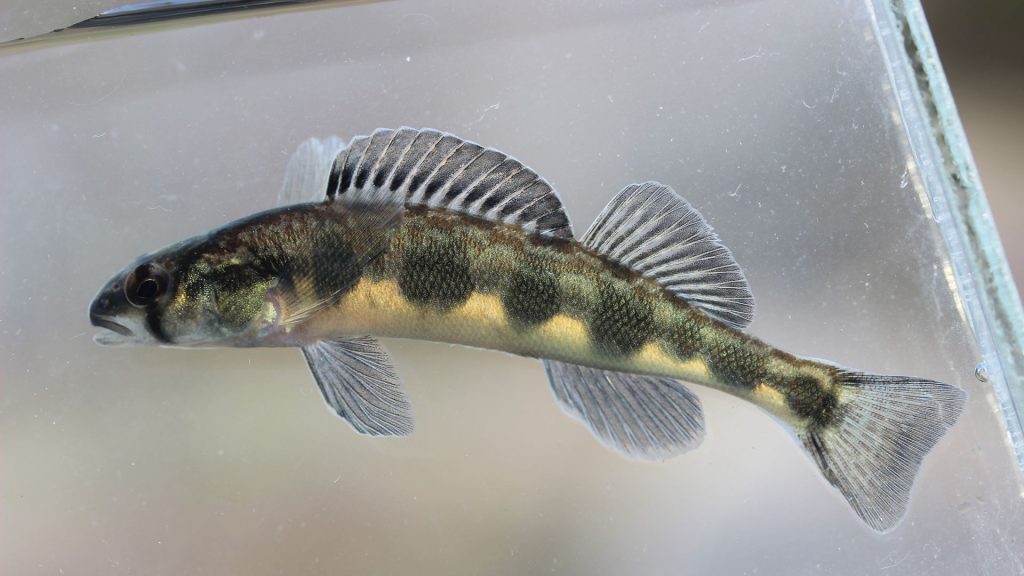
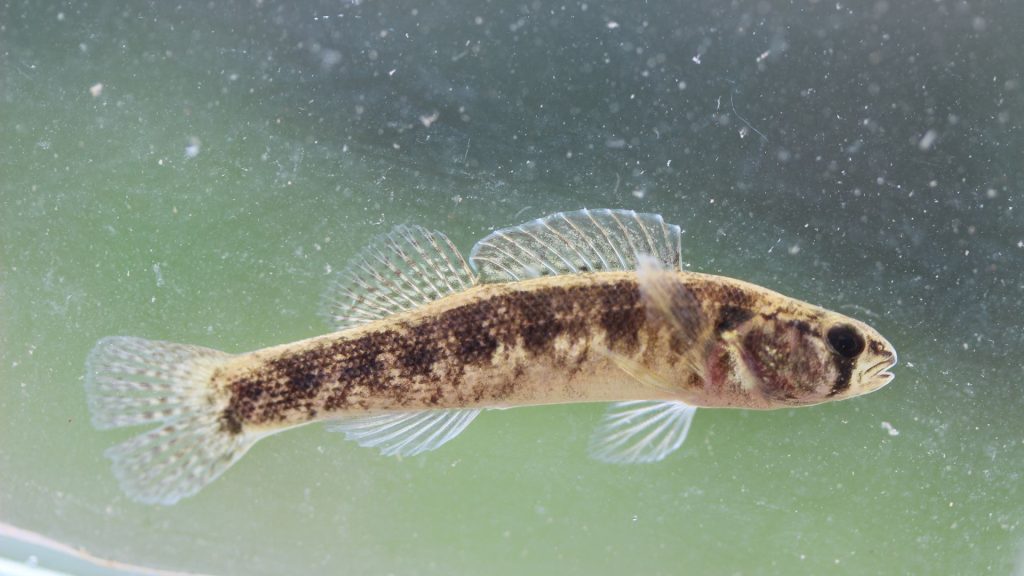
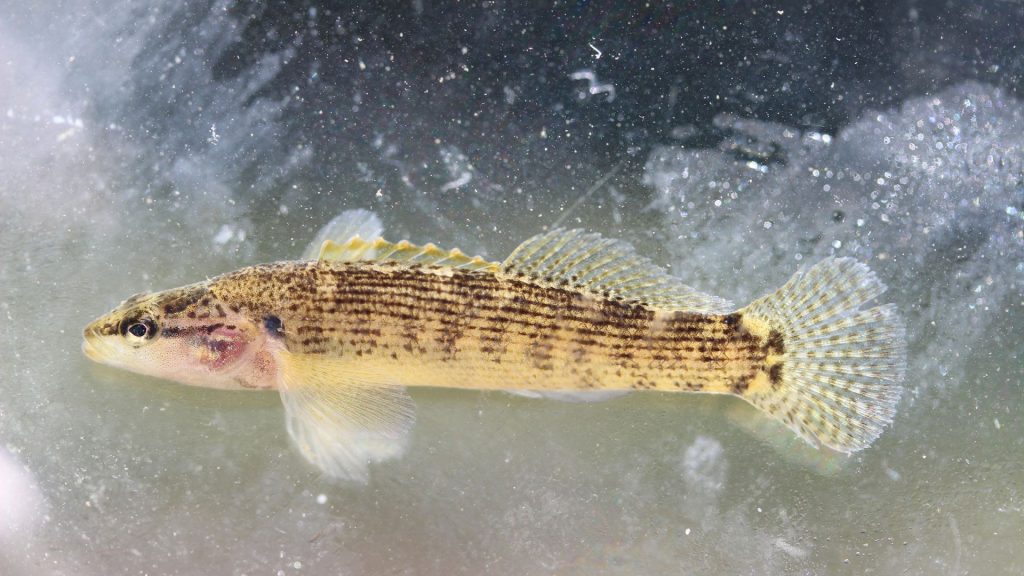
Do you have photos or videos of darters or other freshwater fishes in Alabama? If so, share them with us using the AWW Photo/Video Submission form.
